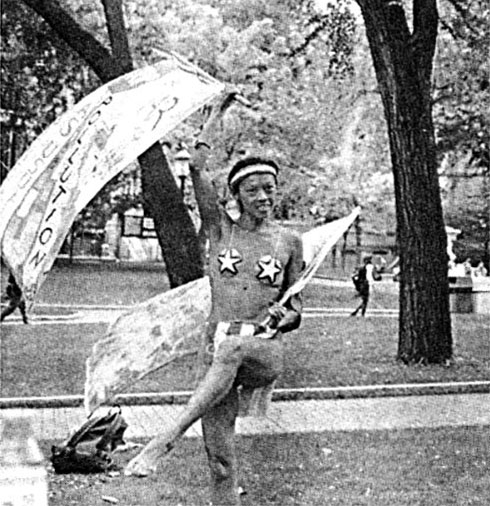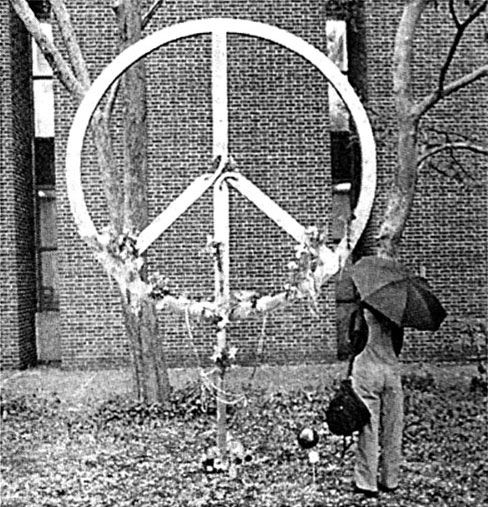words by jh | article
miles and me
jon hassell explains how he was lost and found in the luxuriant jungle of bitches brew
THERE’S SOMETHING I keep saying about how important it is to remember that flowers are the sexual organs of plants. What I’m usually trying to say is, what could be more “spiritual” than the evanescent erotic beauty of, say, stockings or lacy underwear as floral like decoration surrounding the profound mating dance which leads to us being here. Thinking of things this way cultivates an appreciation of art in which false (read: “verbal”) contradictions are resolved. Man-made “opposites” like “sacred” and “profane” go to bed together and make divine little goddesses who remind us that Nature doesn’t speak in words. Goddesses become “witches” (those who hadn’t lost contact with the pre-verbal world). Witches become “bitches” (those whose “animal” instincts tend to overrun social contracts).
The lush Fender Rhodes piano chords and their melodic outlines being tossed around in secret games within the luxuriant jungle of Bitches Brew are like so many dark blossoms and dangling vines to me—vines which I found myself clinging to for dear life around 1971, swinging across the chasm of an impending composerly career in what later came to be called “minimalism”—a genre of music which seemed to aim at the ears and head and not much of the rest of the body. This is that North/South thing—whether within the body or the body politic —whose attempts at resolution I later came to call Fourth World. Thank Goddess you were there, Miles. This music—as all great art must—extended the vocabulary of my imagination. I could dream and fantasize in a way that I couldn’t before.
And it made me pick up my horn again and start to think about how I might try to resolve another set of “opposites” that had been handed down: the composer/performer dichotomy—with music as preconceived text, to be read later (as in nearly all Western classical music), or music as response to the moment (as in jazz and nearly all non-Western musics). This polarity came into high relief a year or two later when I began to study Indian raga—a form in which these elements are perfectly merged—with the great vocal master Pandit Pran Nath. This is, of course, an equation with many possible solutions. Think of Duke Ellington. And Miles (who loved him madly) who continued the evolution of a music which, in its elegant balance between structure and improvisation, became truly “classical” in the global sense of that word, i.e., equal attention to “then” and “now”, to “North” (above the waist, electric keyboards) and “South” (below the waist, drumskins).
Just as some tribal people have sacred instruments which are kept in a special place and only brought out once a year to be played so that the potency of the sound isn’t squandered (the flip side of the “Ambient” idea?), I’ve always reserved my immersion in powerful music like Bitches Brew for special times. This was also something of a survival technique since I knew this was an atmosphere in which I could get too lost and I knew there was no way to follow this act.
I doubt that Bitches Brew would sound exactly the same to me without the intense, florid beauty of Mati Klarwein’s cover painting (above) which seem so intrinsically one with the music as to have crystallised in a “flash of the spirit” (cf., Robert Farris Thompson’s book of the same name) when both were born at the same moment. His universe of imagery struck such resonant chords within me about the unity of “sacred” and “profane” that I could easily imagine all of my music having been attempts to illustrate that world. (It’s been my good fortune to count him among my closest friends for many years now and three of my records are graced with his work.)
Honoured at being asked to reflect on how the music that came out of those three probably hot and humid days of a New York August have resonated in my life, I found a few threads whose intertwining suggests a nice coda pattern in our kente cloth of connections.
Look no further than the cover painting for the perfect reminder of flowers as sexual strategies. The beautiful blossom at lower left, among whose pink petals and folds one can find feminine essence galore, morphs skyward into fire and water and decorated bodies in an ecstatic snapshot of the cycle of Nature. This is the ceiling of my kind of Sistine Chapel. And I know it was Miles’s kind too. Mati had, in fact, a stunning walk-in “chapel” (his title) composed of paintings of even more deeply erotic/spiritual iconography, and he told me Miles had been enchanted by it and had almost bought the whole thing.
Finally, a little “musical iconography”: check out the first John McLaughlin guitar bend on ‘Miles Runs The Voodoo Down’, then listen to track 12 on my latest record, Dressing For Pleasure—the one titled ‘Mati’ that has the de/reconstructed licks of a chorus of African… shall we say “witches”?
This article first appeared in The Wire
Issue 130, December 1994 | www.thewire.co.uk

